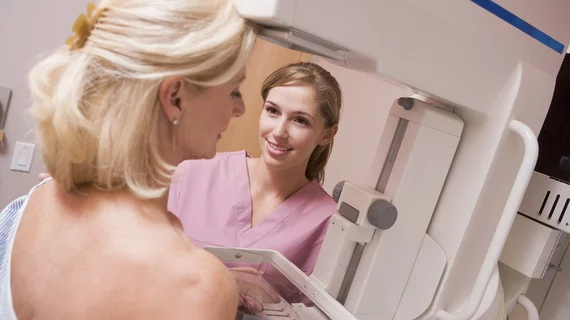New research can help radiologists manage architectural distortion identified via DBT exams
A new study published this week offers insight into how to best manage architectural distortion on digital breast tomosynthesis (DBT), also called 3D mammograms.
Since architectural distortion can be the result of both benign and malignant factors, it is important to have a thorough understanding of the finding. An in-depth appreciation of a patient’s cancer risk helps providers determine how to best guide treatment plans when these findings are identified on imaging exams.
“Implementation of DBT has led to an increase in the proportion of cases of architectural distortion with nonmalignant pathology results at biopsy,” explained authors Juan Villa Camacho, MD, and Manisha Bahl, MD, MPH, both with the Massachusetts General Hospital, in Boston. “However, there is limited published literature investigating the appropriate management of nonmalignant architectural distortion on DBT, and most existing studies include very small numbers of patients.”
Over the three year study period , the researchers examined a total of 129 cases of architectural distortion seen via digital mammography (DM) and DBT exams. Each patient’s pathologies were considered nonmalignant at the time of their biopsy, before they underwent surgical excision. The pathology results from before and after surgery were used to compare the malignancy upgrade rates from nonmalignant pathology at the time of biopsy to malignant pathology after surgery.
Overall, their results revealed that 10.2% of the architectural distortion cases with nonmalignant pathology at biopsy were upgraded to malignant. This figure increased to 28.2% when atypia (cells that look abnormal compared to normal) was noted in the reports.
The experts added that factors such as family history, breast density and findings seen on screening mammogram versus diagnostic mammogram had no significant bearing on the frequency of upgrade rates.
“Our results suggest that imaging surveillance rather than surgery may be considered for radial scars without atypia and other benign concordant pathologies without atypia, consistent with findings from earlier studies,” the experts explained.
While their study does offer valuable guidance for managing architectural distortion, the researchers noted that additional prospective, multi-center studies are needed to validate their findings.
You can view the detailed research in the American Journal of Roentgenology.
More Coverage of Architectural Distortion:
DBT detects more architectural distortion lesions than 2D mammography alone
When does worrisome architectural distortion signal malignancy on mammography?
3D mammography detects more architectural distortions than 2D
Tomosynthesis trumps mammo alone for spotting architectural distortion

